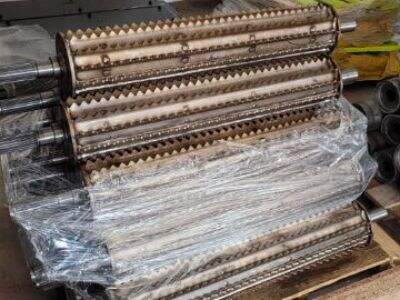And selecting the right tools is very important to make sure we are providing everything our farm animals need when we feed them. A corn cracker is one useful tool. Using a Agmishop agricultural machinery parts like corn cracker has been a very useful tool that we can use in the field to process corn, which in turn means our animals are getting better feed quality, more nutritive feed. Today, let’s talk about how we can add a corn cracker to our feed system that will make our farm work good.
How to Incorporate Corn Cracker into Your Feed System
It sounds hard to put a corn cracker in our feed system, but it can be easy, if you follow these tips. The first step is to examine our parts for agricultural machinery, and find the best location for the corn cracker. We need to ensure we have enough space and that we can access it easily to clean it.
Once we have located the best position for the corn cracker, we can attach it to our feed system. That may involve redesigning the layout or adding new pipes and chutes so that corn can flow through the machine smoothly.
So, now that the corn cracker has been made, we have to test it out to see how well it works. We can let some corn run through it and adjust it if we need to for best result. With a little time, we can throw a corn cracker in our feed system, to improve how we are processing feed.
How to Maintain Good Quality and Nutrition in Livestock Feed
After we introduce the corn cracker into our feed system, we still need a way to make sure our feed is both consistent and nutritious for our animals. You can do this by regularly inspecting the gear for signs of damage. The agriculture spare parts like corn cracker should also be cleaned often to prevent mold and bacteria growth, which can contribute to feed quality issues.
You’ll want to give the corn cracker a once-over to make sure that it’s cracking the corn at the proper size. Too fine of a cracked corn can be difficult for the animals to digest. They may not do a very good job, if it is not cracked enough.
Tips for Using a Corn Cracker
For our farm to be best, we must practice best practice for the corn cracker. One of them is the need for machinery to be kept well-maintained and inspected regularly. This serves to avoid issues and the corn cracker remains in good condition.
And a third good practice is to educate our farm workers how to properly and safely use the corn cracker. That could mean issuing them safe gear and coaching them on how to don the gear for optimal performance.
Potential Problems with a Corn Cracker
Allowing a corn cracker to be included in our feed system may have many advantages, but there are also a few pitfalls to avoid. Something that can be a common issue is clogging, especially if we don’t keep the corn cracker clean. Re-clean the equipment between uses to prevent this from happening, and remove any debris that could clog the flow.
Yet another is to have the settings just right for cracking the corn. If we are unsure about this, let’s make sure to consult the manufacturer instructions or seek the assistance from a professional to help make certain everything’s properly working.
Real World Applications for the Corn Cracker on Farms
A lot of tractors have been upgraded with a corn cracker. One Midwest farm was able to increase feed efficiency 20 percent by using a corn cracker. They observed their animals could better digest the corn, resulting in healthier, more productive animals.







